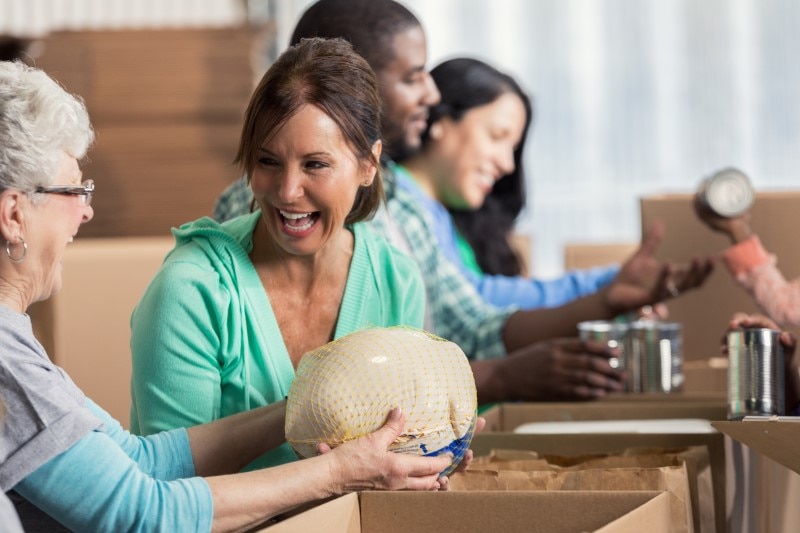
El Día de Acción de Gracias es un momento en el que muchas personas retribuyen algo a alguien, como puede ser ofrecerse a preparar las comidas festivas o donar alimentos a los más necesitados. También es un momento en el que las personas manipulan y reicben comidas en entornos no familiares. La manipulación inadecuada de los alimentos a ocasionado enfermedades transmitidas por los alimentos en festividades pasadas. Las personas que manipulan alimentos en una cocina diferente o que preparan comidas de formas distintas tienen que conocer mejor aun las prácticas de seguridad alimentaria para prevenir brotes de enfermedades.
When helping to prepare foods for others or donating foods
- Start with the basics: Wash your hands before preparing foods and after handling any raw meat, poultry, seafood, or eggs. When in doubt, wash your hands by wetting with water, adding soap and lathering and then scrubbing together for 20 seconds.
- “New to You” Appliances: If you’re working in a kitchen you are not familiar with, take some time to find essential tools and equipment such as a food thermometer. Cooking times will likely be slightly different with different ovens, so a food thermometer is your best bet to know when your meat and poultry are done cooking. Check the temperature of the refrigerator too! Using an appliance thermometer in the refrigerator will let you know the exact temperature, which should be 40°F (4°C) or below.
- Time and Temperature: If foods are to be delivered or served hot, keep them at 140°F (60°C) or above. Keep refrigerated foods and foods served cold at 40°F (4°C) or below. Never let foods sit in the bacteria danger zone (40°F (4°C) - 140°F (60°C)) for more than two hours. Si los alimentos están expuestos a temperaturas superiores a 90 °F (32 °C) (como un auto caliente o un picnic de verano), refrigérelo dentro de las 1 horas.
When receiving foods
- Check the labels: Carefully read labels to determine how the food needs to be handled. Follow any instructions that may be on the label. If the label does not clearly indicate the food is fully cooked, then it should be handled like it is raw and it must be cooked to a safe internal temperature.
- Safe Travels: If foods are received cold, keep them cold by placing in small shallow containers and refrigerating. If you need to travel with an entire turkey it is best to break the whole turkey into smaller pieces and then travel with it in a cooler. This will help the meat stay below 40°F (4°C) for as long as possible.
- Reheat to 165°F (74°C): For maximum safety, leftover food should be reheated to 165°F (74°C). Certain individuals, such as children under 5 years of age, people with cancer and adults over 65 years of age, are at an increased risk of foodborne illness and should always reheat leftover food to 165°F (74°C).
If you have any additional questions, you can contact the USDA Meat and Poultry Hotline to talk to a food safety expert. Call 1-888-MPHotline (1-888-674-6854), email at MPHotline@usda.gov, or chat live at ask.usda.gov from 10 a.m. to 6 p.m. Eastern Time, Monday through Friday.
You can also visit FoodSafety.gov to learn more about how to safely select, thaw and prepare a turkey. For more Thanksgiving food safety tips, follow us on Twitter @FoodSafetygov or on Facebook at Facebook.com/FoodSafety.gov.

